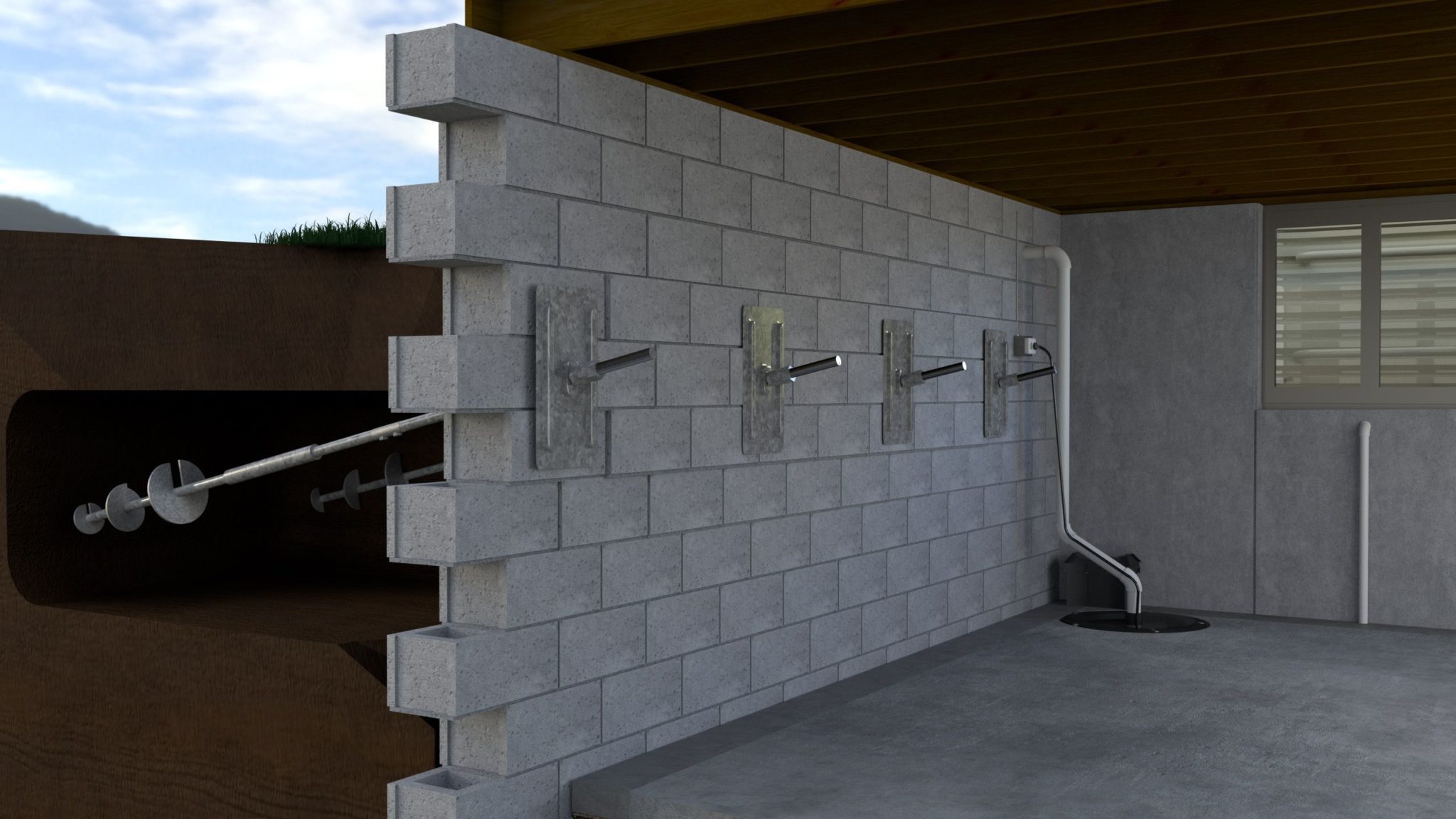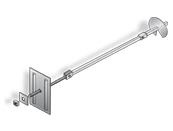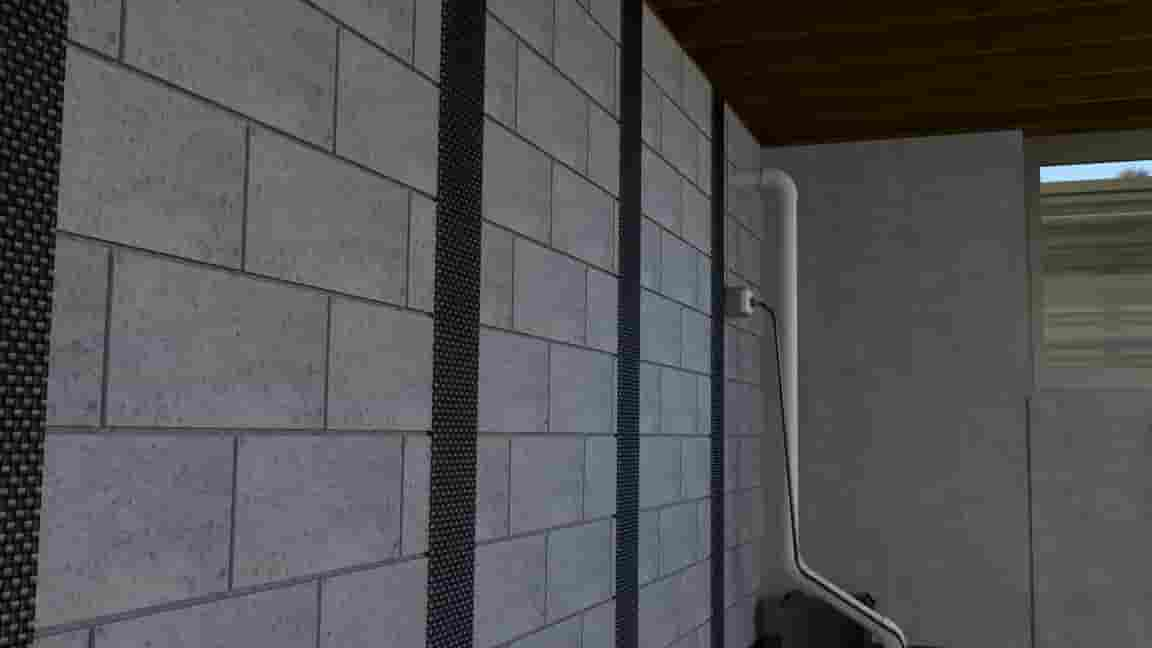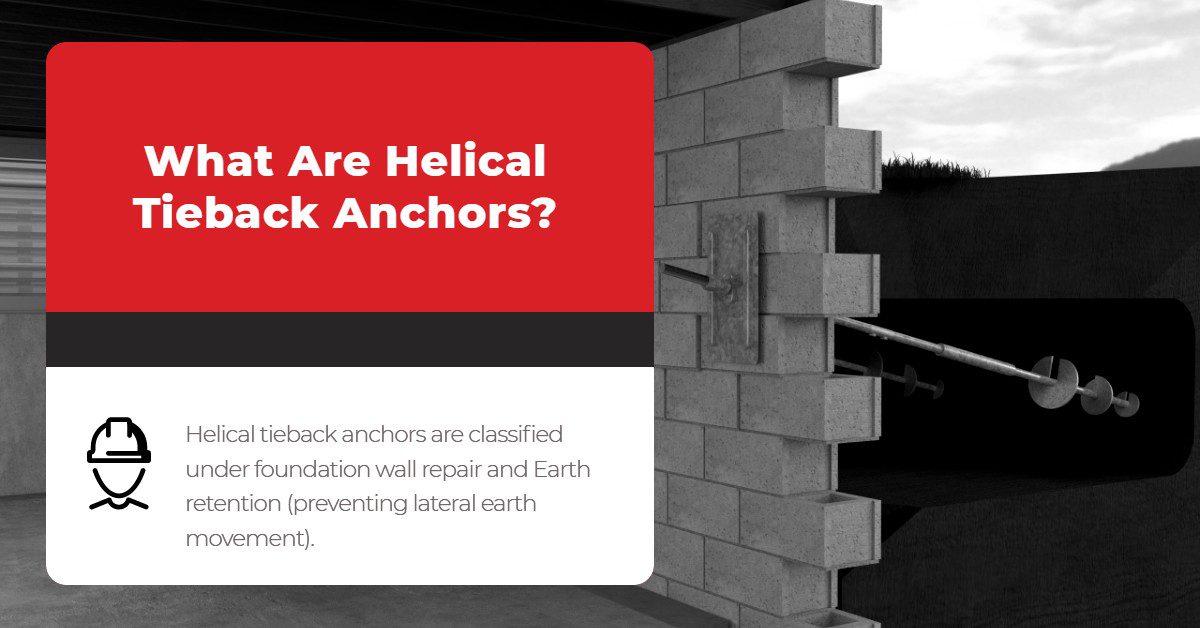Helical tieback anchors are classified under foundation wall repair and Earth retention (preventing lateral earth movement). Chances are you’ve been researching how to deal with a bowing or tipping basement wall, and helical tieback anchors are the first result. This article explains everything you need to know about this foundation wall repair solution and if it can help your home return to its usual, stable self.
What Are Helical Tieback Anchors?
Helical tieback anchors work like corkscrews and are drilled through your foundation until they pull your bowing wall back to its original 90-degree angle. These anchors are perfect for properties that have limited outside space because they’re installed from inside your basement, requiring very minimal excavation. They’re also lightweight, portable, not adversely affected by weather, and can be load-tested immediately after installation.

Why Are Helical Tieback Anchors Needed?
Basement walls need helical tieback anchors when outside pressure becomes too much for your foundation to handle, causing it to bow, lean, or tip inward. This happens when water saturates the outside soil, increasing the overall weight of the dirt. To prevent this, most foundation repair professionals recommend waterproofing your foundation. This includes installing a drain tile system inside or outside your basement walls. This system will collect the excess water building up outside or under your foundation walls, preventing them from increasing the soil volume. Once collected, the drain tile channels the moisture to a sump pump, where it’s ejected away from your home using discharge lines.
Retaining Walls
Besides basement walls, helical tieback anchors can be used for shoring and reinforcing failing retaining walls. Professionals simply drill the anchors through your wall until it’s pulled back outward. You can also install helical tieback anchors before your wall tips, bows, or leans, strengthening it before it fails.
Sea Walls
If you live on the intercoastal, near a lake or other body of water, chances are a concrete sea wall is preventing your property from soil erosion. If that’s the case, take the time to inspect your wall and ensure that it’s still structurally stable. If not, call a professional now! They can repair your failing wall using helical tieback anchors or targeted grout injections.

Helical Tieback Anchors vs. Wall Anchors vs. Carbon Fiber Straps
There are two other types of foundation wall repair solutions most commonly used by professionals: wall anchors and carbon fiber straps.
Wall Anchors
Wall plate anchors work the same way as helical tieback anchors. They pull the wall back outward and secure the foundation into the outside soil. Foundation Professionals Of Florida use Earth Contact Products as their leading supplier of wall anchors. These anchors consist of an inside wall plate, an outside anchor, and a threaded high-strength rod that connects them together.
- The 12” x 26” inside wall plate (fabricated from hot-rolled steel) is placed on your bowing wall.
- The ground anchor (fabricated from two high-strength plates forming four reinforcing ribs and four cleats) is placed in a trench outside your foundation.
- The 3/4” diameter threaded high-strength rod is slipped through the wall plate until it reaches the outside anchor. Once connected, the plate is torqued, and your wall is pulled back outward.
These anchors are the most economical method of foundation wall repair, but they still require some outside excavation and access. The anchors are installed using handheld equipment and can be done in under a day.
Carbon Fiber Straps
Carbon fiber straps are a foundation wall repair solution mainly used if your bowing is under 3 inches. Foundation Professionals Of Florida use Fortress Stabilization Systems’ Invisibeam Straps as their preferred choice. This three-part strap system can strengthen, support, and stabilize failing foundation walls.
- The carbon fiber strap is placed on your bowing wall and cemented into the concrete using hundreds of epoxy rivets.
- The top of the strap is anchored to your rim joist, where your foundation wall meets your first floor.
- The bottom of the strap is anchored into your foundation floor, preventing the wall from sliding inward.
Carbon fiber straps are highly versatile because they can correct bowing walls and corners. If you have a corner crack, one or both walls can shift and move out of place. If professionals place a carbon fiber strap along the corner, they can keep the wall secure for decades.

Who Offers Helical Tieback Anchors Near You?
If you live in the Southeastern United States and need helical tieback anchors, get in touch with Foundation Professionals Of Florida. Since 2012, we’ve been serving Florida, Georgia, Alabama, Mississippi, South Carolina, North Carolina, Tennessee, Kentucky, Virginia, the Virgin Islands, and the Florida Keys. Call today, and our foundation repair professionals will inspect your basement wall, find out why it’s bowing, and give you the best solution on the market.

